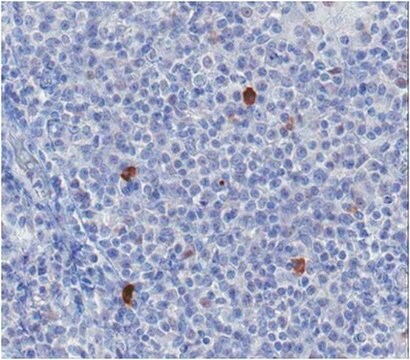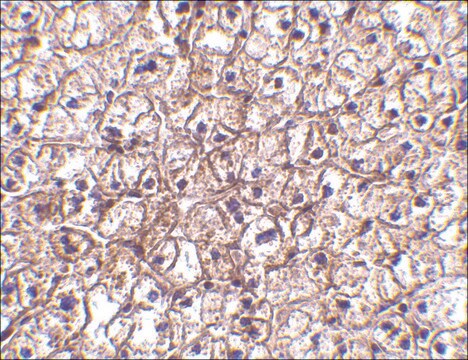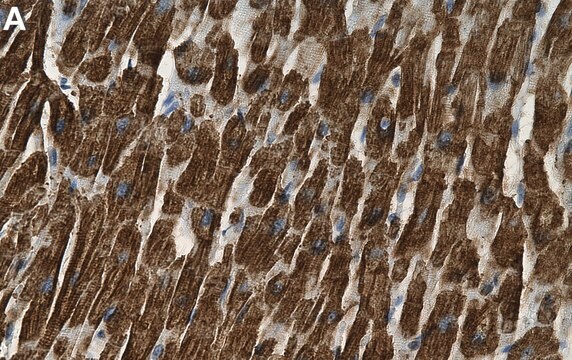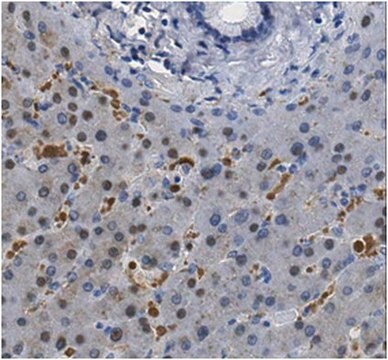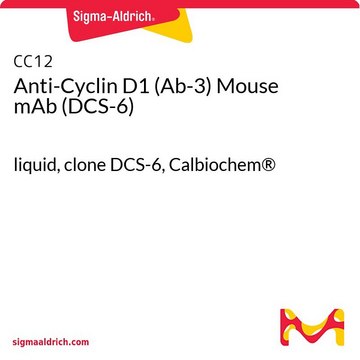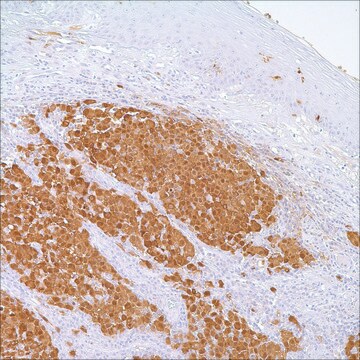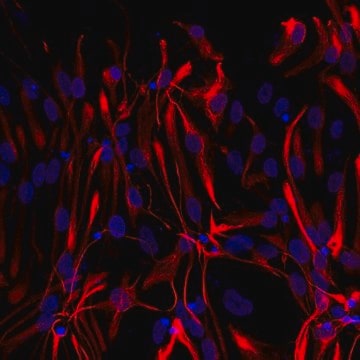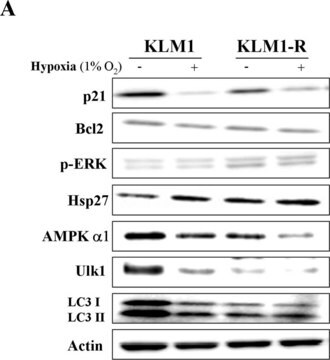MABF938
Anti-MxA, clone M143 (CL143)
clone CL143, from mouse
Synonym(e):
MxA, IFI-78K, Interferon-induced GTP-binding protein Mx1, Interferon-induced protein p78, Myxoma resistance protein 1, Myxovirus resistance 1, MX1
About This Item
Empfohlene Produkte
Biologische Quelle
mouse
Qualitätsniveau
Antikörperform
purified immunoglobulin
Antikörper-Produkttyp
primary antibodies
Klon
CL143, monoclonal
Speziesreaktivität
guinea pig, human, mouse, rat
Methode(n)
flow cytometry: suitable
immunohistochemistry: suitable (paraffin)
western blot: suitable
Isotyp
IgGκ
NCBI-Hinterlegungsnummer
UniProt-Hinterlegungsnummer
Versandbedingung
wet ice
Posttranslationale Modifikation Target
unmodified
Angaben zum Gen
human ... MX1 (4599)
Allgemeine Beschreibung
Spezifität
Immunogen
Anwendung
Entzündung & Immunologie
Immunoglobuline & Immunologie
Immunohistochemistry Analysis: Representative lots detected MxA immunoreactivity in patients-derived skin lesion samples using paraffin-embedded tissue sections (Urosevic, M., et al. (2007). J. Clin. Invest. 117(10): 2834–2846; Urosevic, M., et al. (2005). J. Natl. Cancer Inst. 97(15):1143-1153).
Flow Cytometry Analysis: A representative lot detected MxA expression in MxA-transfected U-87-H4 and U-87-D11, but not untransfected U-87-K4 human gliobastoma cells (Schneider-Schaulies, S., et al. (1994). J. Virol. 68(11):6910-6917).
Western Blotting Analysis: A representative lot detected a robust MxA induction in the lung tissue from guinea pigs that recieved intranasal administration of recombinant human alpha-IFN (Van Hoeven, N., et al. (2009). J. Virol. 83(7): 2851–2861).
Western Blotting Analysis: A representative lot detected a time-dependent MxA induction in the lung tissue from rats following intraperitoneal Seoul virus inoculation (Hannah, M.F., et al. (2008). Brain Behav Immun. 22(4):503-516).
Immunoprecipitation Analysis: A representative lot immunoprecipitated MxA from murine MxA-expressing Swiss 3T3 cells (clone 4.5.15) (Flohr, F., et al. (1999). FEBS Lett. 463(1-2):24-28).
Qualität
Western Blotting Analysis: 0.5 µg/mL of this antibody detected MxA in 10 µg of Swiss 3T3 (clone 4.5.15) cell lysate.
Zielbeschreibung
Physikalische Form
Lagerung und Haltbarkeit
Sonstige Hinweise
Haftungsausschluss
Sie haben nicht das passende Produkt gefunden?
Probieren Sie unser Produkt-Auswahlhilfe. aus.
Lagerklassenschlüssel
12 - Non Combustible Liquids
WGK
WGK 1
Flammpunkt (°F)
Not applicable
Flammpunkt (°C)
Not applicable
Analysenzertifikate (COA)
Suchen Sie nach Analysenzertifikate (COA), indem Sie die Lot-/Chargennummer des Produkts eingeben. Lot- und Chargennummern sind auf dem Produktetikett hinter den Wörtern ‘Lot’ oder ‘Batch’ (Lot oder Charge) zu finden.
Besitzen Sie dieses Produkt bereits?
In der Dokumentenbibliothek finden Sie die Dokumentation zu den Produkten, die Sie kürzlich erworben haben.
Unser Team von Wissenschaftlern verfügt über Erfahrung in allen Forschungsbereichen einschließlich Life Science, Materialwissenschaften, chemischer Synthese, Chromatographie, Analytik und vielen mehr..
Setzen Sie sich mit dem technischen Dienst in Verbindung.